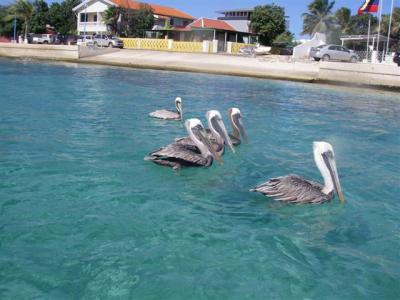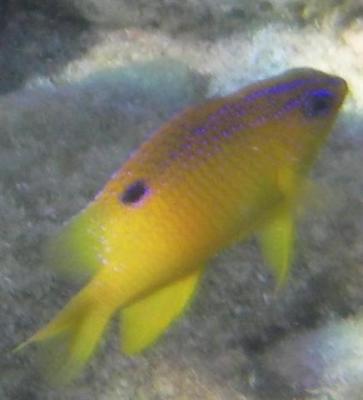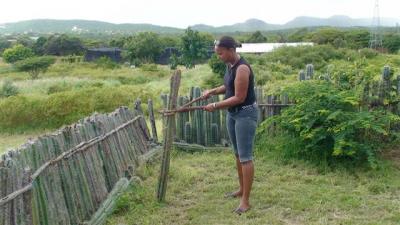This morning we returned the car and ran some errands. One was the boat store, where we had the shock of a life time. They had one and only one Shurflo 5.7 pump in stock. We couldn’t believe it! The store doesn’t normally carry them, it was special ordered for someone who never picked it up. We bought it and are happy to have a proper spare again. A second errand was for Eric’s SCUBA equipment. The hose that attaches the gauges to the tank is leaking, so he bought a new hose. And, Christi got a much needed haircut.
Once errands were done, we went back to the boat. Eric changed his hose, which turned out to be a harder task than he had anticipated. Then we loaded all our dive gear in the dinghy and headed up the coast to a dive spot called Cliff, near where the fancy neighborhood starts. We tied to the mooring and worked on getting in. Hard dingies are not really good for diving as they tip easily. Getting into your gear on board and jumping off with your tank strapped on you isn’t a good plan. So, Christi got in the water, then Eric handed her the tank and BCD. She put everything on, then Eric handed her his rig. Then Eric got in and put everything on. We were ready to roll and hadn’t even flipped the dinghy. High 5!
Being as we hadn’t gone up the coast very far, the dive site was similar to the one behind our boat. There are a lot more soft corals here, both more species and more of each species. The only ones we can identify are the giant sea rods, which are a good 5 6 feet tall, and the sea plums, but there are many more varieties. We also saw a few basket starfish, which look like a plant, not like a fish. A basket star is the creature that latched onto Christi’s hand and wouldn’t let go in Guadeloupe, reminiscent of a space alien latching on to a host human in a science fiction movie.
However, this site has less fish and less variety of fish. The most exciting fish that we spotted is a midnight parrotfish. It is gigantic, as in comparable in size to a Napoleon. It looked all black with iridescent blue markings on its face, but when we looked in the fish book, we realized it was dark blue, not black. We have never seen anything like it before. It was really exciting. This must be the spot for abnormally large fish, because we also saw an unusually large trumpet fish. We saw a couple different species of file fish that had very odd designs on them. One of them was also quite large. And, finally, we saw a fish in the distance that Eric thinks was a very large fish and Christi thinks is a small shark.
Getting out was the exact opposite of getting in. Eric took his rig off. At the same moment he pulled himself up on the port side of the boat, Christi yanked with all her might on the starboard side to keep the dinghy from flipping. He got in with no problem. We put in both sets of rigs, then Christi hopped on, with Eric carefully counterbalancing her weight. Another high 5!
After diving, we unloaded our rigs aboard Kosmos, then went snorkeling in front of the Venezuelan embassy, which is just a couple boats over from us. We were told there is a lot to see there. When we pulled up in the dinghy, six pelicans immediately landed in the water right next to us. They watched us intently. We watched them back intently, amused that they were so interested in us. Apparently, the fishermen will clean fish here and throw them the scraps, so they were waiting expectantly. We eventually got tired of the staring contest and got in the water.

The area is rocky, there is little coral growth, and there weren’t many fish. But, there was a good variety of fish to look at, and we got some decent photos. We heard a turtle is frequently sighted here, but we never saw it. The first is a juvenile longfin damselfish. It will turn brown when it matures.

This picture is neat because you can see how easy it is to confuse fish species. The fish in the background is a blue tang. We’re not sure what the fish in the foreground is, but with similar color and shape, it is easy to mistake it for a blue tang.

Here is a sergeant fish. The silver variety is the Continue reading →




